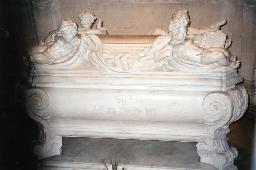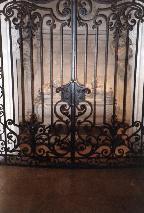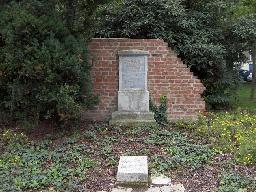Haydn, Joseph |
| COMPOSER (AUSTRIA) |
|
BORN 31 Mar 1732, Rohrau, Niederösterreich - DIED 31 May 1809, Wien: Haydngasse 16 GRAVE LOCATION Eisenstadt, Burgenland: Bergkirche (Mausoleum) |
|
Son of a poor wheelwright. As a young boy he had a beautiful singing voice and in 1738 he went to a cousin at Hainburg for musical education. There Karl Georg Reutter, choirmaster at St. Stephens Cathedral in Vienna, discovered him during a visit and took him to Vienna. After a few years Reutter was afraid Haydn would lose his voice and agreed with him that he would be castrated. Just before this took place his father found out and stopped it. But when he was 15 he did lose his voice (empress Maria Theresia even complained about him). In 1749 he was dispelled from the choir. Haydn was poor, but he started to compose and his compositions were asked for. From 1761 onwards he was employed by the Esterhazy family and after the death of Gregor Werner he became musical director of the Esterhazy orchestra. Around 1768 he was influenced by the Sturm und Drang (storm and stress) movement. In 1773 Maria Theresia visited the Eszterhazy palace and this time she was pleased with him and gave him an expensive gift. In 1782 he wrote the opera Orlando Paladino which was his most famous work during his own lifetime. In 1785 his close friend Mozart introduced him to the freemasons, but their ideas conflicted with his catholic beliefs and he left them in 1787. In 1791 Haydn went to London and asked Mozart to accompany him. Mozart refused because his wife was ill. Haydn went alone and soon afterwards Mozart died. This affected Haydn so badly that even years later tears would come into his eyes if Mozart's death was mentioned. The London visits (1791-1792 and 1794-1795) were very successful and he met the future king George IV. He also became very close friends with Rebecca Schröter, the widow of a musician who wrote him love letters. He would have wanted to marry her, but he was married to the sister of the woman he had loved and the marriage was a failure. He and his wife had seperated, but there had been no divorce. Haydn also had an affair with Luigia Polzelli, the wife of a violinist at the Esterhazy court. During the return journey from his first London visit he met the young Beethoven at Bonn. When he returned from the second visit he wanted to visit C.P.E. Bach in Hamburg, but there he found out that Bach had died as long ago as 1788. He worked for Nikolaus Esterházy's grandson now, but he didn't get along with him as well as with his father. He was mainly requested to write masses, which he did. On March 1800 his wife died at Baden-Baden. Later that year he received famous visitors at his house in Eisenstadt: Nelson, William Hamilton and Emma Hamilton. In 1802 and 1803 he wrote his last compositions and in his last years he was visited by Abbe Vogler and Constanze Mozart. He dictated his memories and recollections and he also made a catalogue of his works. Haydn was a dying man when general Oudinot's French troops entered Vienna on 13 May 1809 and Napoleon ordered a guard to protect his home so that he wouldn't be disturbed. He died a few weeks later. He was buried at the Hundsthurmer Cemetery (now the Haydn Park where a tombstone remains). But soon the amateur phrenologist Johann Peter, who was the local police chief bribed officials to exhume the body to enable him to study the skull. A gravedigger decapitated the body and the head was taken away. After he had examined it Peter gave the skull to Esterhazy's secretary, Joseph Rosenbaum. Rosenbaum kept it and his wife, opera singer Theresa Gassman delighted in showing it to her visitors. In 1820 Nicholas Esterhazy moved his body to Eisenstadt, where it was buried in the crypt of the Bergkirche. It was discovered that the skull was missing and when Esterhazy found out that Rosenbaum had it he demanded it back. Rosenbaum gave him another skull, but it was found out that it was only 20 years old. Then Rosenbaum gave Esterhazy a skull as old as Haydn's and it was believed to be the real one. But he had kept the real skull and on his deathbed he bequeathed it back to Peter, who bequeathed it in his turn to the Vienna Conservatory. Later it was given to the The Gesellschaft der Musikfreunde in Vienna. In 1932 Dr. Paul Esterhazy had built a mausoleum in the Bergkirche and wanted to bury the head and the body together. The Gesellschaft der Musikfreunde only handed it over in 1954. On 5 Jun 1954 Haydn's body and skull were finally reunited and placed in the mauseleum. Related persons • met Beethoven, Ludwig van • was visited by Hamilton, Emma • was visited by Hamilton, William • is brother/sister of Haydn, Michael • was a friend of Mozart, Wolfgang Amadeus • met Pichler, Karoline • was a friend of Pleyel, Ignace • was teacher of Pleyel, Ignace • was visited by Weber, Constanze |






